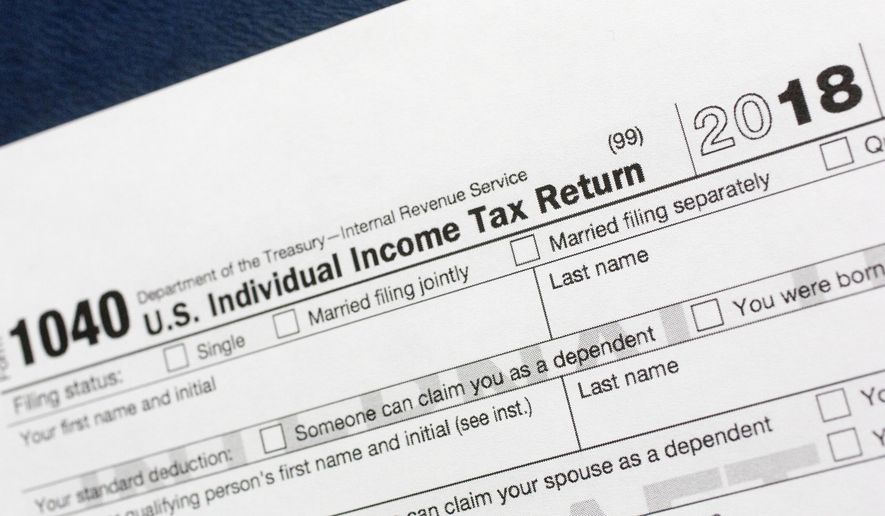OPINION:
Prosperity is returning to U.S. communities that have been taking a licking, a reason for cheerful celebration as the new year begins. Recent figures show the economy is going gangbusters, but in some places Americans are simply going. Americans feeling the bite of greedy tax collectors are voting with their feet and migrating to states where they’re more likely to find fortune.
The Christmas season almost always presents the nation’s businesses a major portion of their profits for the year, and this year December was even more generous with good news than usual. The month produced a sizzling 312,000 new nonfarm jobs, as reckoned by a Friday report by the U.S. Bureau of Labor Statistics. That was more than 76 percent better than the number forecast. President Trump made certain his social media followers didn’t miss the news, which validated the economic benefits of the Tax Cuts and Jobs Act that he championed in 2017. “Great jobs numbers just announced!” he tweeted (with his usual exclamation point).
The startling boost to the labor force put the number of jobs created during 2018 at 2.6 million, beating the previous year’s solid performance of 2.2 million new jobs. Of those, 284,000 were in the manufacturing industry, a sector written off as a dinosaur headed for extinction under President Obama. Wages surged, up 3.2 percent for the year. A rise from 3.7 percent to 3.9 percent in the unemployment rate — usually a sign of economic trouble — was the result this time of 400,000 previously sidelined workers flooding back into the job market.
Most of the new jobs — 271,000, according to employment services provider ADP — were added in the private sector. All but 54,000 were hires in small and midsized companies. Those companies are not the kind counted in the major stock indexes rattled by the trade uncertainties reverberating around the globe. Worried investors endure a teeth-jarring ride on Wall Street these days, but economic indicators show the ride is smoother on Main Street.
Except, that is, in certain states with particular tax policies that are chasing away their residents. A study by the free-market think tank Cato Institute bears out the common-sensical proposition that Americans will often migrate to regions where they’re not slaves to the tax man. Examining 2016 Internal Revenue Service data, Cato found that the 25 highest-tax states and the District of Columbia, which never meets a tax it doesn’t love, registered a combined average individual income, sales and property tax bite of 9.8 percent of personal income. Such jurisdictions lost nearly 600,000 residents that year to the 25 lowest-tax states, whose tax bite averaged 7.6 percent. They took with them $33 billion in aggregate income.
Among the hardest-hit states were New Jersey with its 8.97 percent top tax bracket, which logged 100 departures for every 76 arrivals, and New York with its 8.82 percent top state income tax (not counting an additional 3.9 percent in New York City.) The state lost 100 residents for every 65 it took in. California, the dream destination for generations of Americans, watched 100 flee for every 91 moving in. California has the highest top tax rate of 13.3 percent.
A place in the sun costs a lot in the state that is no longer so golden, as Californians have learned they can find a warm climate somewhere else. The top destinations for Californians heading for the exits are Washington, Nevada and Texas, which took in 138, 131 and 109 new residents, respectively, for every 100 leaving. It’s hardly a surprise that none of these three states collect an income tax.
Florida, a favorite refuge for Northeasterners who love the sun and despise income taxes, welcomed 145 new residents for each 100 who departed. The lure of Florida prompted New York Gov. Andrew Cuomo to blame his state’s losing population on “climate-based” decisions. Nearby New Hampshire, however, with a similar chilly winter climate, is growing at a healthy clip. Unlike New York, it has no income tax.
States are the “laboratories of democracy,” as Justice Louis Brandeis called them. They’re also laboratories of economy. As the experiments continue in how to manage a state — or a nation — so that the people can prosper, there’s an obvious conclusion that try as some experts might to prove otherwise, “It’s the taxes, Stupid.”




Please read our comment policy before commenting.